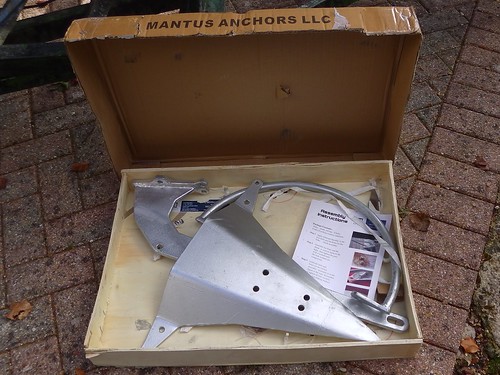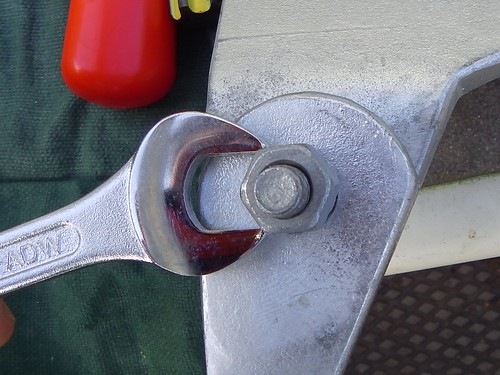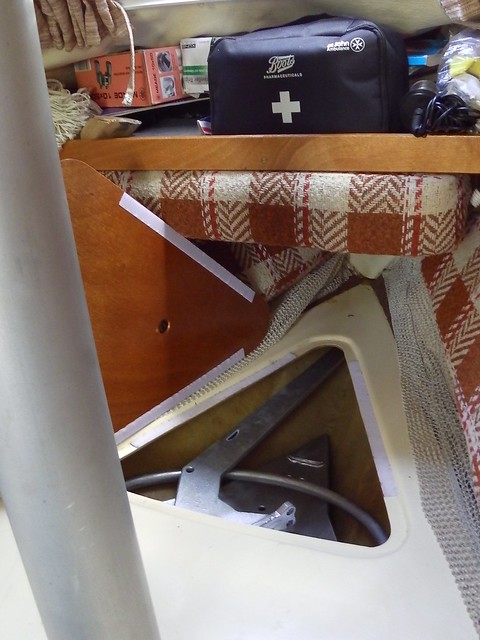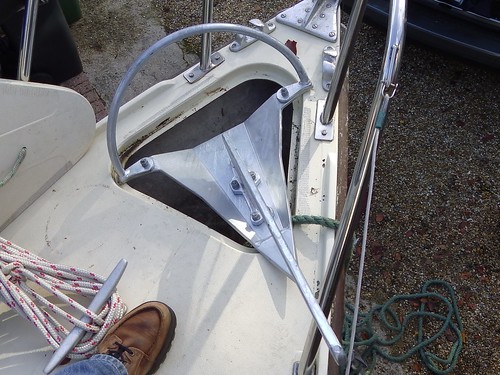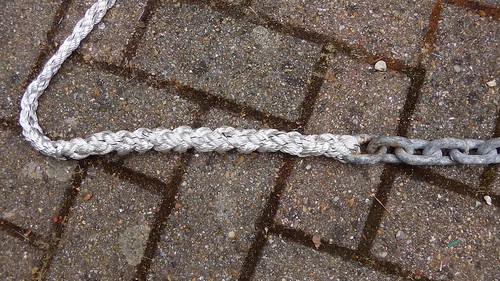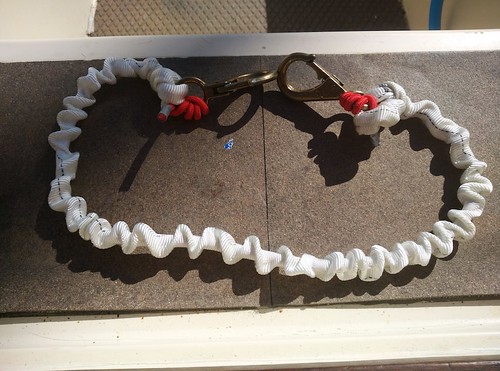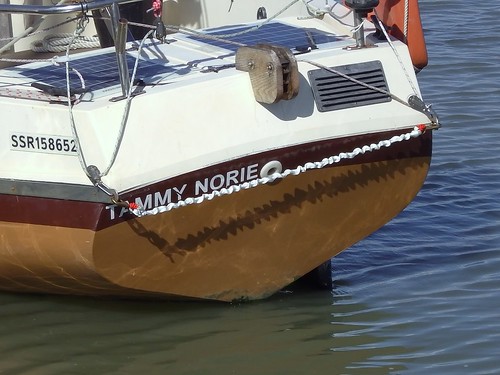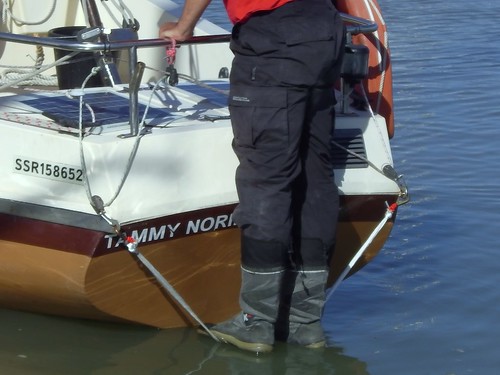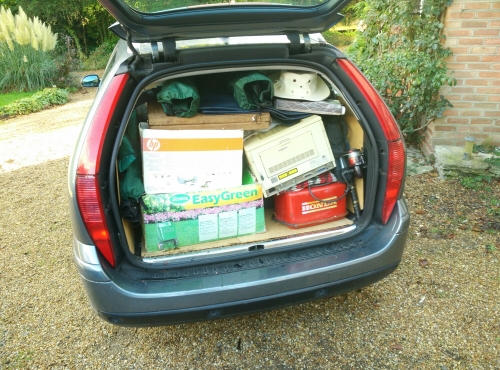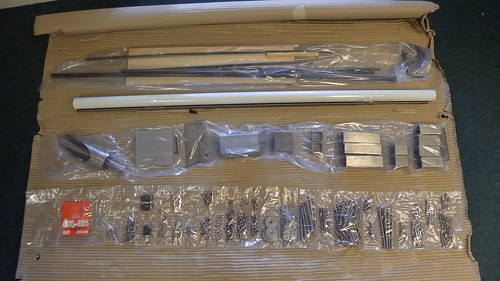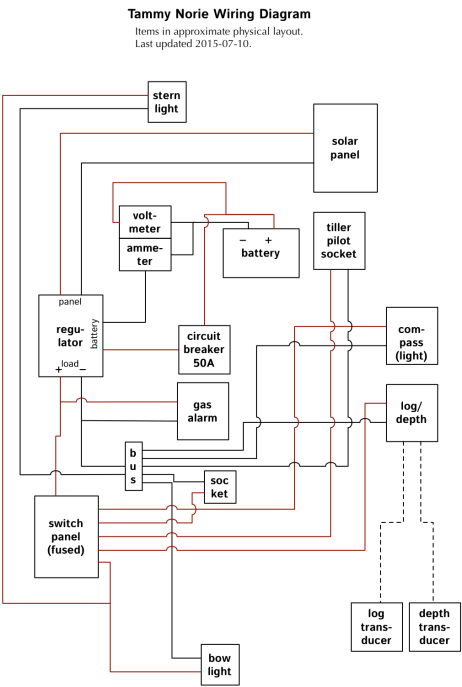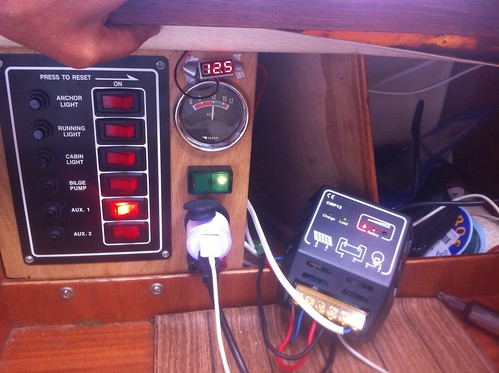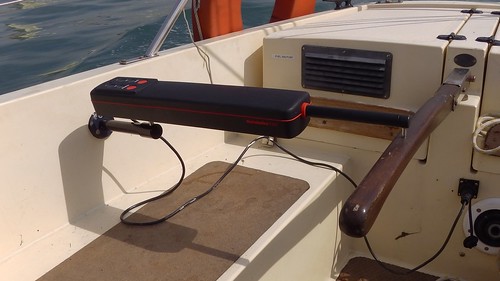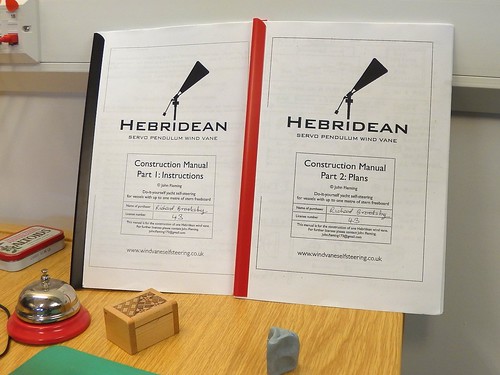There’s a good title for my non-sailing friends!
A rubbing strake goes around a boat to protect it from bumping into things. Like a car’s bumper or fender, you’re not really supposed to bump things with it, but it will help if you do, and it can be replaced more easily than repairing the boat. On Tammy Norie, the rubbing strake is two long pieces of a mysterious hardwood called “danta” that are screwed over the deck-to-hull joint — a place where you really don’t want to damage your boat.
Here’s a picture showing the port-side rubbing strake.

The problem I have is that the starboard-side rubbing strake has rotted where water has run off the decks. This probably happened while Tammy Norie was in storage in a garden for 25 years.
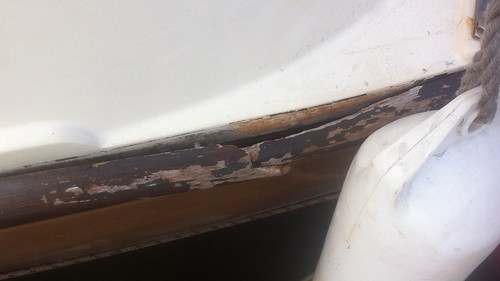
So I need to repair or replace the starboard rubbing strake.
A series drogue is a kind of brake that you use to slow down your boat in a storm. In storms your boat can be turned over by big waves. It can be turned sideways to the waves and get rolled over, or it can plummet down the face of a wave, dig in to the next one, and get “pitch-poled”, turning head over heels. These things are pretty unlikely, but I intend to stay alive even if unlikely things happen at sea.
The solution I believe to be best is a series drogue: a long rope (over 90m) with lots of little cones on it that you drag behind the boat. Here’s a picture from a great article at sailboat-cruising.com:

The length ensures that the rope gets a steady amount of drag even when the water is being pushed in cycles by the waves. The drogue is attached by a bridle to both of the boat’s quarters (the back corners) so that it keeps the boat facing straight downwind, preventing it being hit side-on by waves and rolled over. US Coast Guard report CG-D-20-87 describes tests and recommendations and is quite an interesting read. Roger Taylor swears by the series drogue on Mingming — a very similar boat to Tammy Norie — and you can see him using his on YouTube.
So, what have these two things got to do with each other?
Well, you can imagine that there’s quite a serious amount of force on the boat from the series drogue when a wave hits. The coast guard report has a table with suggestions for larger boats. It doesn’t really extend below an 8000lb displacement, and since Tammy Norie weighs about 1 tonne I have to extrapolate a bit, but it looks to me that the table suggests a load of 5000lb or about 23kN. It further recommends that each attachment point be able to take 70% of the design load, which would be 16kN. So I want to be able to hang the entire boat off either attachment.
So where and how do I attach the drogue?
Tammy Norie has a couple of mooring cleats on the quarters. At the moment they’re just bolted to the deck with washers on the back. I already think they need reinforcing, but would I trust them to take repeated 10kN forces over a period of days with my life in the balance? I’m not sure that I trust any fixing at any point on the boat with that responsibility.
Another method is to attach chain plates (basically slabs of metal) to the outside of the hull to spread the load, bolted through to backing plates. This makes a sandwich out of a reasonable area of the hull and helps to spread the load. Oceanbrake will even supply some.

That would probably be OK, but it would be ugly and involve making holes in the boat. I think I can do better.
My first thought was to attach much longer chain plates underneath the rubbing strake. That way they would spread the load further, be attached to the hull-to-deck joint (a strong place), be hidden from view, and can re-use the existing holes that fix the strake itself.
But then it occurred to me: why not replace the entire rubbing strake with a stainless-steel strap? In fact, why not replace both strakes with a single strap that goes right around the bows? That would really be spreading the load. The boat would effectively be embraced by a very strong girdle, with very little load on the fibreglass at all. I’m certain you could hang the boat off that.
It would have other advantages. The hull-to-deck joint would be reinforced, and other things nearby (such as the stanchions, cleats, and anchor fitting) could be bolted to L-shaped backing plates that were also bolted to the strap. I could be pretty certain that they weren’t going to rip up bits of deck then, and could take heavy loads.
It isn’t even that expensive (about £100) or heavy (about 10kg).
How would it function as a rubbing strake? I’m sure it would protect my boat, but it might be antisocial, taking chunks out of other boats or docks. However, it would be quite easy to tap holes and screw a sacrificial wooden or rubber strake over the top.
I have an alternative plan: a rope strake. These are quite traditional. Here’s a lovely example on a dinghy.

This is potentially a simpler and easier way of replacing the strake and providing a strong attachment for a series drogue, but wouldn’t do anything to reinforce the hull-to-deck joint or other fixings.
I’d very much welcome feedback on these ideas.

